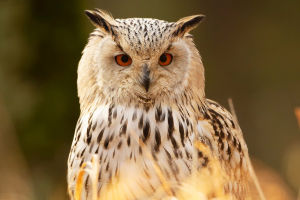Africa, the birthplace of humanity, is home to the world's richest wildlife and boasts an extraordinary range of terrestrial species. With its vast savannahs and diverse landscapes, Africa harbors more than half of the planet's land-dwelling wildlife.
Among the captivating array of creatures that thrive in this ecosystem, the African grasslands are particularly known for hosting an abundance of herbivores. In this article, we will explore some of the iconic herbivores that roam the African grasslands and contribute to the intricate web of life in this magnificent ecosystem.
The Zebra
The zebra, adorned with black and white stripes, is one of the most famous animals of the African grasslands. These medium-sized herbivores gather in groups and primarily feed on grass, deriving essential nutrients from this source.
The zebra's unique stripes not only create a striking appearance but also offer effective camouflage, helping them blend into the grasslands and evade potential predators.
The Giraffe
With its long neck reaching over 2 meters in length, the giraffe claims the title of the world's tallest land animal. These graceful herbivores browse on leaves and twigs, often accessing food sources that are out of reach for other animals.
Their remarkable necks and long tongues have evolved to adapt to this particular feeding method, enabling them to thrive in the African grasslands.
The Rhino
Rhinos, divided into two main types, the white rhino and the black rhino, are powerful herbivores found in the African grasslands. They rely on grass as their primary source of sustenance.
Equipped with thick skin, immense physical strength, and formidable horns, rhinos have developed effective defensive mechanisms against potential threats.
The African Elephant
African elephants, weighing over 4 tons on average and with some individuals reaching nearly 10 tons, are the largest terrestrial mammals on Earth. These majestic herbivores can be spotted in renowned locations such as Serengeti, Ngorongoro Crater, Lake Manyara, and Masai Mara.
African elephants have a diverse diet, including bananas, leaves, bark, and fruits, and spend a significant portion of their day, approximately 16 hours, foraging for food.
The African Buffalo
The African buffalo is a formidable herbivore that forms massive herds in the grasslands. Predators such as lions often target them as a source of food.
While conflicts between herbivores are infrequent, solitary, injured, or young buffalos become vulnerable to hunting by lions or hyenas. The African buffalo remains a powerful force within the grassland ecosystem.
The Hippopotamus
The hippopotamus, though not exclusively herbivorous, primarily feeds on grass and can be found in rivers, lakes, and pools within the African savannah. These semi-aquatic mammals adopt a nocturnal lifestyle and seek refuge in water or mud during the day.
The Wildebeest
Known for their characteristic black and white stripes, wildebeests are considered one of the most iconic herbivores of the African grasslands.
They primarily feed on grass, particularly the short and resilient plants found in these regions. Wildebeests often form extensive migratory herds, joining forces with zebras in search of food and water.
The African grasslands are a remarkable ecosystem teeming with diverse herbivores. These animals play vital roles in maintaining the delicate balance of this natural habitat. Preserving the wildlife of the African grasslands is crucial for the conservation of biodiversity and the preservation of our planet's natural heritage.
By understanding and appreciating these magnificent creatures, we can foster a greater sense of responsibility toward their protection and ensure the long-term sustainability of the African grassland ecosystem.


